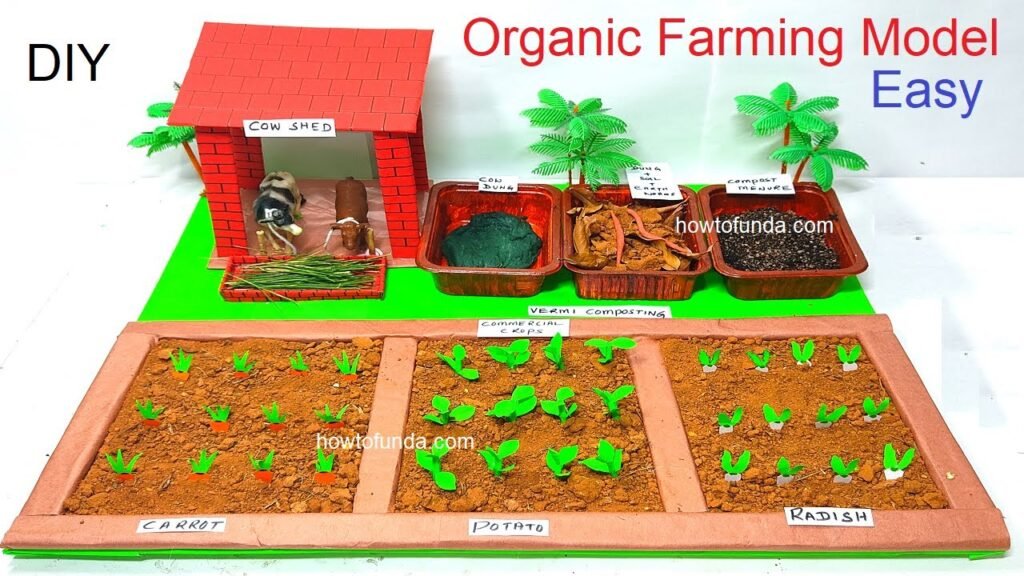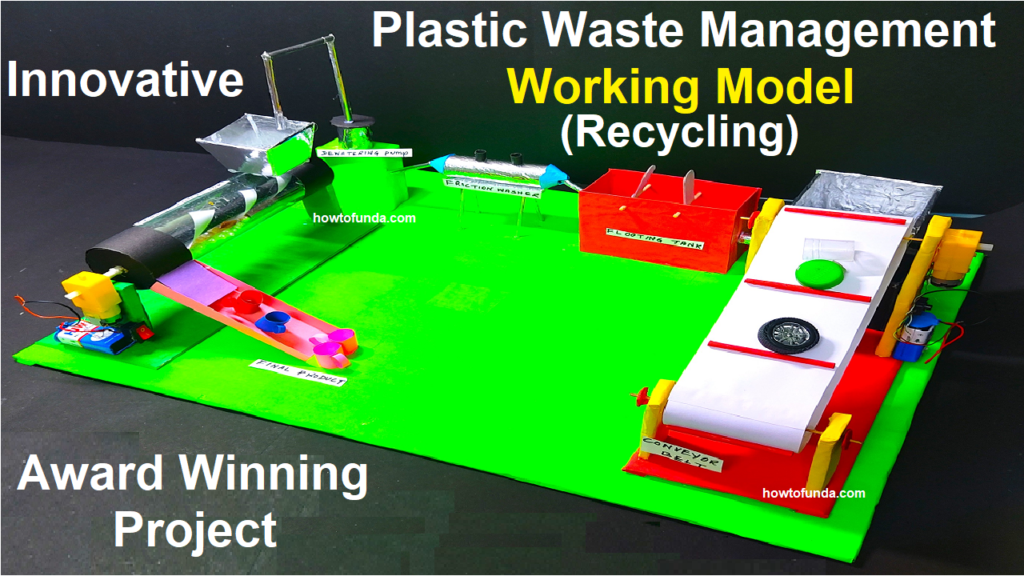Introduction
Waste is an unavoidable part of human life. Every activity we perform—eating, studying, cleaning, cooking, traveling, and even using electronic devices—produces some kind of waste.

With the increase in population, urbanization, and industrialization, the amount of waste generated across the world has increased rapidly.
If this waste is not handled properly, it leads to pollution, health problems, water contamination, soil degradation, and harmful effects on plants and animals.
Therefore, waste management has become one of the most important environmental concerns of the 21st century.
Waste management refers to the process of collecting, segregating, transporting, processing, recycling, and disposing of waste materials in a safe and environmentally responsible manner.
Effective waste management helps make our surroundings clean, reduces the spread of diseases, saves natural resources, and protects the Earth for future generations.
For school students, understanding waste management is essential because children and young adults are the future caretakers of the planet.
By learning the correct methods of disposing waste and practicing sustainable habits, students can contribute to creating a cleaner and healthier environment.
What is Waste?
Waste can be defined as any unwanted, unusable, or discarded material that no longer serves any purpose. It may come from homes, schools, industries, hospitals, farms, shops, and offices. Waste may be solid, liquid, or gaseous.
Characteristics of Waste:
- It has no value to the person disposing it
- It may be harmful if not managed properly
- It occupies space
- It may pollute the environment
What is Waste Management?

Waste management is a planned system of handling waste from the point of generation to the point of final disposal. It includes activities such as:
- Segregation of waste
- Collection and transportation
- Recycling and reusing
- Composting
- Incineration
- Scientific landfill disposal
The main purpose of waste management is to reduce the amount of waste produced, prevent pollution, protect public health, and conserve natural resources.
Why Waste Management is Important?
1. Protects the Environment
Waste that is improperly thrown into drains, rivers, streets, or fields pollutes air, water, and soil. Proper waste management ensures safe disposal and reduces pollution.
2. Prevents Diseases
Accumulated waste becomes breeding grounds for mosquitoes, flies, rats, and pathogens, causing diseases such as malaria, dengue, diarrhea, and cholera.
3. Conserves Natural Resources
Recycling reduces the need for extracting raw materials like wood, minerals, and metals.
4. Saves Energy
Producing goods from recycled materials requires less energy compared to manufacturing them from fresh raw materials.
5. Reduces Landfill Space
Scientific waste management reduces the amount of waste dumped in landfills, allowing better use of land.
6. Promotes Clean and Healthy Surroundings
Waste-free surroundings create a pleasant, hygienic, and healthy environment for communities.
7. Encourages Sustainable Development
Waste management supports long-term environmental balance and ensures resources for future generations.
Types of Waste
School students should know that waste comes in many forms. Understanding the types of waste helps in selecting the right method of disposal.
Here are the major types:
1. Organic or Biodegradable Waste
This type of waste comes from natural sources and decomposes easily by microorganisms.

Examples:
- Kitchen waste (vegetable peels, fruit scraps)
- Garden waste (leaves, grass, flowers)
- Agricultural waste (crop residue)
- Paper and cardboard
- Wood
Disposal Method:
- Composting
- Biogas production
Organic waste can be reused to make compost, which is an excellent natural fertilizer.
2. Inorganic or Non-Biodegradable Waste
This waste does not decompose easily and remains in the environment for a long time.

Examples:
- Plastics
- Glass
- Metals
- Electronic components
- Packaging materials
Disposal Method:
- Recycling
- Reuse
- Upcycling
Plastic waste is the major cause of pollution today. It clogs drains, pollutes oceans, and harms animals.
3. Solid Waste
Solid waste includes everyday items that we throw away.

Examples:
- Paper
- Plastics
- Glass
- Metals
- Food waste
- Old clothes
- Broken furniture
Disposal Method:
- Landfills
- Composting
- Recycling
4. Liquid Waste
Liquid waste includes waste water and chemicals.
Examples:
- Sewage
- Drain water
- Chemical wastes from industries
- Oil and grease
Disposal Method:
- Sewage treatment plants
- Effluent treatment
- Chemical neutralization
5. Hazardous Waste
Hazardous waste is dangerous and needs special handling.
Examples:
- Batteries
- Pesticides
- Medical waste
- Paints
- Household cleaners
- Industrial chemicals
Disposal Method:
- Incineration
- Secure landfills
- Chemical treatment
- Specialized disposal units
6. Medical or Biomedical Waste
Waste generated in hospitals, clinics, and laboratories.

Examples:
- Syringes
- Bandages
- Blood bags
- Needles
- Cotton swabs
Disposal Method:
- Autoclaving
- Incineration
- Shredding
- Chemical disinfection
This type of waste can spread infections, so it must be handled carefully.
7. E-Waste (Electronic Waste)
Electronic waste includes discarded electrical and electronic devices.
Examples:
- Mobile phones
- Computers
- TVs
- Chargers
- Refrigerators
- Electronic toys
Disposal Method:
- Recycling
- Refurbishing
- E-waste collection centers
E-waste contains hazardous chemicals like lead and mercury, which are harmful to humans and the environment.
8. Industrial Waste
Waste generated by industries and factories.
Examples:
- Chemicals
- Metal scraps
- Dyes and pigments
- Plastic pellets
- Ash
- Manufacturing residues
Disposal Method:
- Wastewater treatment
- Incineration
- Secure landfills
9. Agricultural Waste
Waste produced by farming activities.

Examples:
- Crop residue
- Cattle dung
- Fertilizer containers
- Pesticide bottles
Disposal Method:
- Composting
- Biogas production
- Controlled burning (scientific methods only)
10. Construction and Demolition Waste
Waste produced during construction, renovation, and demolition activities.
Examples:
- Cement
- Bricks
- Concrete
- Tiles
- Wood pieces
- Metal rods
Disposal Method:
- Recycling
- Road construction
- Reuse of materials
Methods of Waste Management
Understanding how waste is managed helps students learn how everyday actions impact the environment. Below are major waste management techniques:
1. Segregation of Waste
The first and most important step in managing waste is separating waste into categories.
Common segregation method:
- Green bin: Organic waste
- Blue bin: Dry recyclable waste
- Red bin: Hazardous waste
Segregation makes recycling and disposal easier and more efficient.
2. Recycling
Recycling means converting waste materials into new usable products. It saves raw materials, conserves energy, and reduces pollution.

Recyclable items include:
- Paper
- Glass
- Metals
- Plastics
- E-waste
Recycling is one of the most effective ways to minimize waste.
3. Reuse
Reuse means using an item again instead of throwing it away.
Examples:
- Reusing glass jars
- Using old clothes as cleaning cloths
- Refilling water bottles
- Using old newspapers for packing
Reuse helps reduce waste at the source.
4. Composting
Composting is a natural process where microorganisms convert biodegradable waste into nutrient-rich manure.
Materials used:
- Vegetable peels
- Dry leaves
- Fruit scraps
- Grass clippings
Composting improves soil fertility and reduces household waste.
5. Incineration
Incineration means burning waste at very high temperatures. It reduces waste volume, kills disease-causing germs, and is used for hazardous or medical waste.
However, it must be done scientifically to avoid air pollution.
6. Landfills
A landfill is a specially designed area where waste is dumped safely. Modern landfills have layers of soil, plastic lining, drainage systems, and covering material to prevent pollution.
Problems with landfills:
- Land required
- Bad odor
- Greenhouse gas emissions
That is why reducing waste is more important than dumping it.
7. Vermicomposting
Vermicomposting uses earthworms to decompose organic waste. It produces high-quality compost known as vermicompost.
Schools can practice vermicomposting in gardens.
8. Waste-to-Energy Plants
These plants convert waste into usable energy such as electricity, heat, or fuel.
Examples:
- Biogas plants
- Refuse-derived fuel (RDF)
- Incineration energy plants
This method reduces landfill waste and produces clean energy.
The 5R Principles of Waste Management
School students should follow the 5Rs:
1. Reduce
Use fewer resources. Avoid unnecessary waste.
2. Reuse
Use items multiple times.
3. Recycle
Convert waste into new products.
4. Recover
Recover usable energy or materials from waste.
5. Refuse
Say no to plastics and harmful products.
Waste Management in India
India generates millions of tonnes of waste every day. To tackle this, the government has launched several initiatives:
Key initiatives:
- Swachh Bharat Abhiyan
- Solid Waste Management Rules 2016
- Plastic Waste Management Rules
- E-Waste Management Rules
- Clean India Mission
- Smart Cities Mission
Many cities are developing recycling plants, composting centers, and waste-to-energy facilities. Public participation is crucial for success.
Role of Students in Waste Management
Students can contribute by:
- Practicing waste segregation at home and school
- Reducing use of plastic items
- Encouraging composting
- Participating in cleanliness drives
- Raising awareness through posters, street plays, and campaigns
- Using dustbins properly
- Saving paper and reusing notebooks
- Educating others about proper waste disposal
Young minds play a vital role in building a cleaner and greener India.
Conclusion
Waste management is essential for a healthy, clean, and sustainable environment. With the increase in population and consumption, waste generation is rising rapidly.
If waste is not managed properly, it pollutes air, water, and soil, harms wildlife, and affects human health. By understanding the types of waste and the various waste management methods—such as segregation, recycling, reuse, composting, incineration, and landfilling—we can effectively reduce pollution and conserve natural resources.
School students have a major responsibility in promoting environmental cleanliness. Simple habits like using dustbins, avoiding plastic, recycling paper, and composting organic waste can create a big positive impact. Waste management is not just a government duty but a shared responsibility of every citizen.
A cleaner planet begins with small changes at home and school. Together, we can make the Earth a better place to live for present and future generations.

